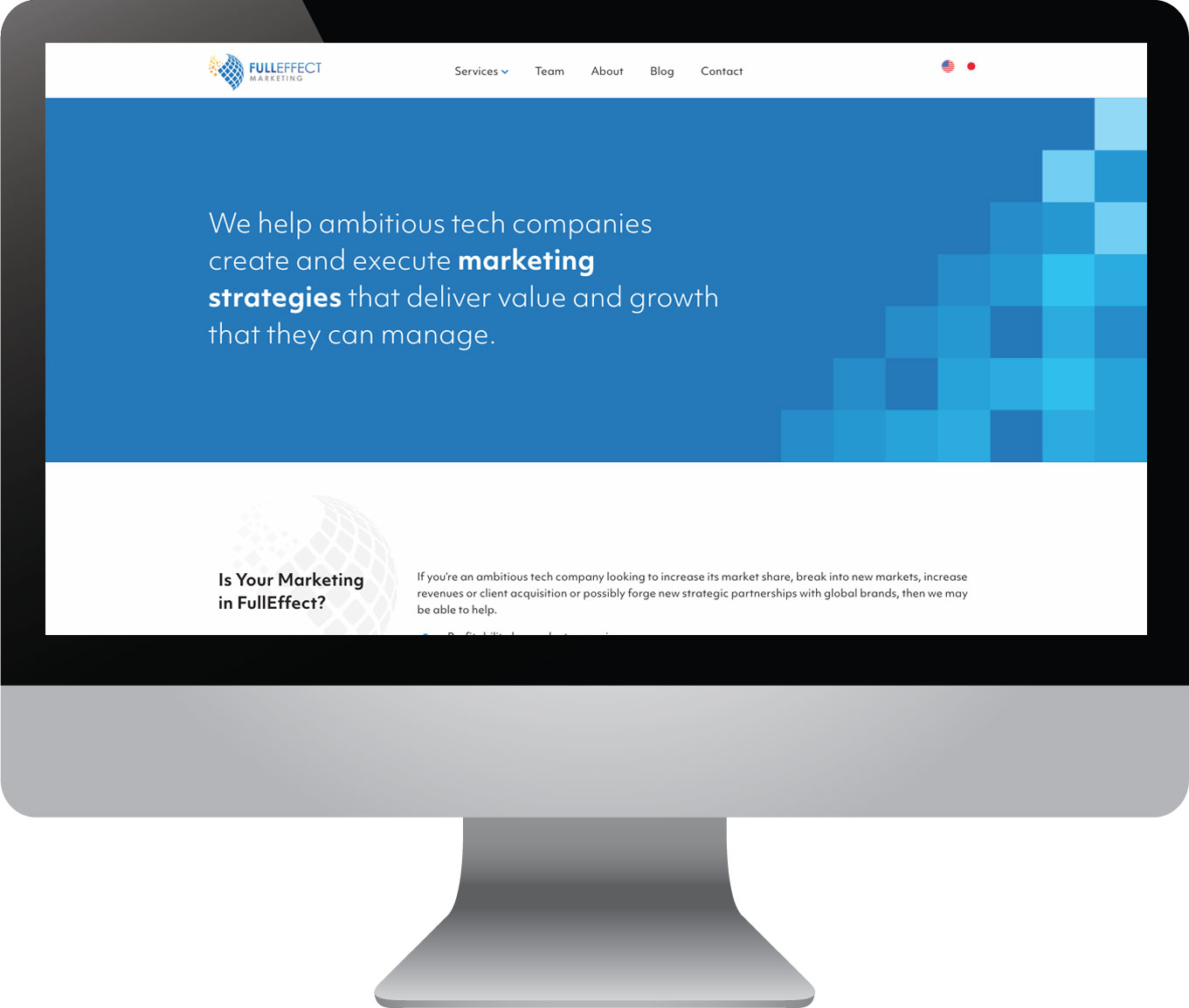We recently worked with FullEffect Marketing to make a website for their consulting business. FullEffect creates marketing strategies for small and mid-sized technology companies that use emerging technologies like Internet of Things, artificial intelligence and virtual reality. The twist was that the Silicon Valley-based company works in both the U.S. and Japan. So, the website needed to be available to speakers of both languages.
Does your business have potential customers who speak another language? Is there a new country you’re trying to reach? Get in touch to see how we can help you update your website to speak to those users.
Making a multi-language website was a new challenge for us, and we learned a lot during the process. We’ve compiled a few of those lessons into the following suggestions for your own website:

- Consider the aesthetic preferences of the various cultures and countries your website needs to cater to. With FullEffect, we wanted to make sure the design would work for both American and Japanese audiences.
- Provide an easy way for users to switch the language of the page. Consider including flags representing each of your languages that people can click on.
- If you aren’t a fluent speaker of all the languages you need on your website, hire someone to translate your content. Tools like Google Translate are handy for personal use, but shouldn’t be relied on for your business.
- If you’re on WordPress, use a plugin to do the heavy lifting for you. The FullEffect website uses the free version of the PolyLang plugin to manage page translations. The plugin makes it simple to create translations for all your sites pages and posts. It also provides buttons for switching languages. Plus, it can automatically detect the language of the user’s browser and send them to the appropriate version of the page. WPML is another popular option for WordPress sites.
- Think about third party tools on your site. The team at FullEffect wanted to make it easy for potential clients to reach them. So, we added an online chat box that lets website users instantly reach FullEffect to ask questions or request information. But the chat software lives outside the website we built. We had to find a way to present the chat in the correct language for each visitor. The chat service being used gives the ability to create multiple widgets, and assign a language for each; using some simple coding, we detect which version of a page is being shown, and display the appropriate chat box. Similarly, if your site has those kinds of third-party or outside tools, see if there are multi-language options for using them.
Being an international business, we knew it was important that our website speak to all our clients in their own language. Romega’s solution makes it easy for us to create both English and Japanese versions of our pages, which will help us better reach our customers on both sides of the Pacific.
— Michael Campbell, FullEffect International

